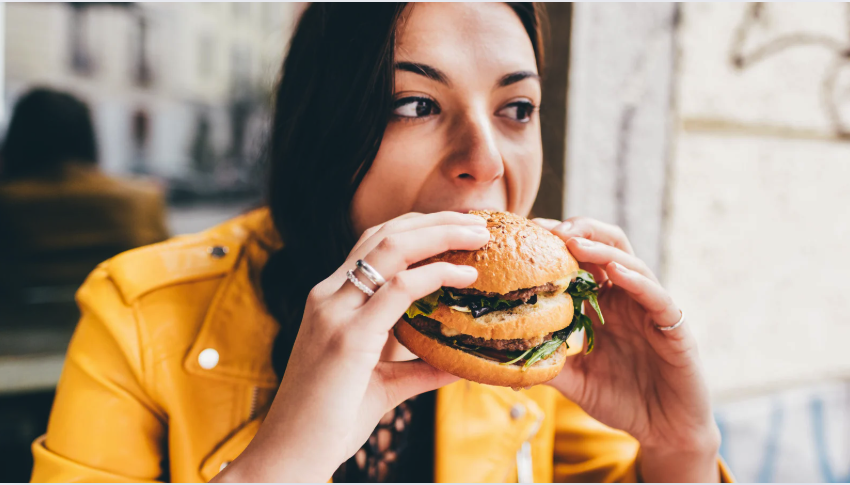What to Eat When You Don’t Know What to Eat
What to Eat When You Don’t Know What to Eat
If you’ve ever found yourself staring into the fridge, overwhelmed by the thought of “What should I eat?” you’re not alone. For many women, especially those who’ve spent years bouncing between diet trends and yo-yo dieting, deciding what to eat can feel confusing and stressful. The constant back-and-forth of on-again, off-again diets leaves many women questioning their own food choices, fearful of making the “wrong” decision, and stuck in a cycle of guilt and shame around eating.
But the problem isn’t about choosing the “right” food—it’s about repairing your relationship with food and learning how to trust yourself again. The solution lies in intuitive eating, a concept that encourages you to tune into your body’s needs and choose foods that make you feel good, both physically and mentally.
The Diet Cycle: How It Leads to Confusion
Years of restrictive dieting and chasing the latest trends have led many women to lose trust in their own ability to make healthy choices. You’ve likely tried countless diets, from low-carb to high-protein, keto to intermittent fasting, each one promising quick results. While these may work temporarily, they don’t address the underlying issues, and more often than not, they leave you feeling even more confused about what to eat.
Each diet seems to come with its own set of rules: cut out this, avoid that, eat only at certain times. Eventually, you might not know how to eat without following some kind of rigid plan. The constant focus on “right” and “wrong” foods creates an unhealthy relationship with eating. You may start to associate certain foods with guilt or shame, rather than enjoying the nourishment and pleasure that food can bring.
Why Intuitive Eating Is the Answer
Intuitive eating isn’t about following a strict plan or counting calories—it’s about listening to your body’s natural hunger and fullness signals. By tuning into what your body truly needs, you can begin to make food choices that feel satisfying and nourishing, without the guilt or confusion.
Here’s how intuitive eating can help you break free from the cycle of diet confusion:
Relearn Hunger and Fullness
Years of dieting can dull your ability to recognize when you’re hungry or full. Intuitive eating encourages you to slow down and pay attention to these signals. Are you eating because you’re hungry, or out of habit, boredom, or emotion? Recognizing true hunger is the first step to making choices that fuel your body in a way that feels good.Reject the Diet Mentality
Let go of the idea that certain foods are “good” or “bad.” There’s no one-size-fits-all when it comes to food. Some days, you might crave a nutrient-dense salad, and on others, you might want a slice of pizza. Both can be part of a healthy, balanced lifestyle. The key is moderation and making choices that leave you feeling satisfied, rather than deprived.Focus on Satisfaction, Not Restriction
Restrictive diets often leave you feeling unsatisfied, which is one reason why they’re so hard to maintain long-term. Intuitive eating is about finding satisfaction in your meals. When you’re satisfied, you’re less likely to overeat or feel the need to snack mindlessly later on. Choose foods that make you feel good—both physically and mentally.Challenge Food Guilt
Diet culture has conditioned many of us to feel guilty about eating certain foods, especially indulgent ones. But food isn’t something you should feel ashamed about. It’s okay to enjoy a dessert or comfort food. When you stop labeling foods as “bad,” you free yourself from the emotional burden that often comes with eating.Nourish Your Body with What It Needs
Instead of focusing on external rules, tune in to what your body truly needs. Maybe you need more protein one day, or maybe you’re craving fruits and veggies. The goal of intuitive eating is to choose foods that leave you feeling energized, satisfied, and content, without overthinking every bite.
How to Get Started with Intuitive Eating
If you’ve been on the diet rollercoaster for years, switching to intuitive eating may feel like a big leap. But it doesn’t have to be overwhelming. Here are a few tips to get started:
Take Small Steps: Start by identifying when you feel hungry and stopping when you feel full. Don’t rush the process—give yourself time to rebuild your body’s natural cues.
Listen to Your Body: Pay attention to how different foods make you feel. Do you feel energized or sluggish after certain meals? Use this information to guide your future choices.
Practice Self-Compassion: Let go of perfection. Some days, you may overeat or make choices that don’t feel great. That’s okay—intuitive eating is a journey, not a destination. Be kind to yourself.
Ditch the Scale: Intuitive eating isn’t about losing weight—it’s about learning to trust your body. Shift the focus from numbers on the scale to how you feel physically and emotionally.
Seek Support: If you’re struggling to break free from the diet mentality, consider working with a dietitian or therapist trained in intuitive eating to guide you through the process.
If you’ve spent years feeling unsure about what to eat, it’s time to take back control and trust your body’s wisdom. Intuitive eating helps you break the cycle of guilt, confusion, and insecurity, allowing you to make choices that nourish your body and mind. By learning to listen to your own needs, you can develop a healthier relationship with food—one that’s free from the stress of “right” or “wrong” and rooted in what makes you feel good.
Your body knows what it needs. Trust it, nourish it, and give yourself the freedom to enjoy food again.
